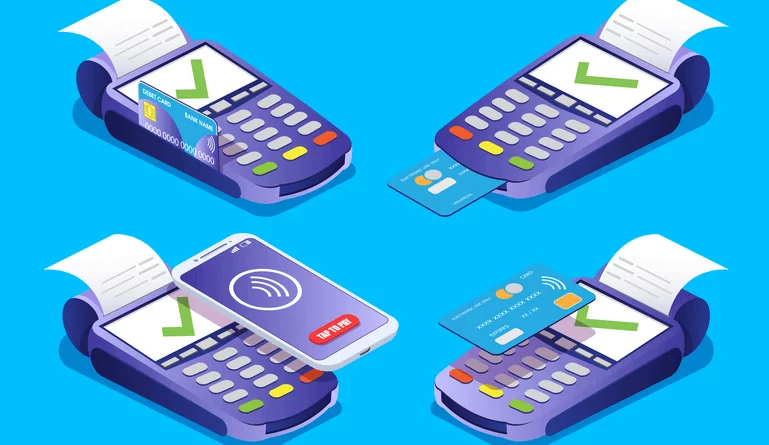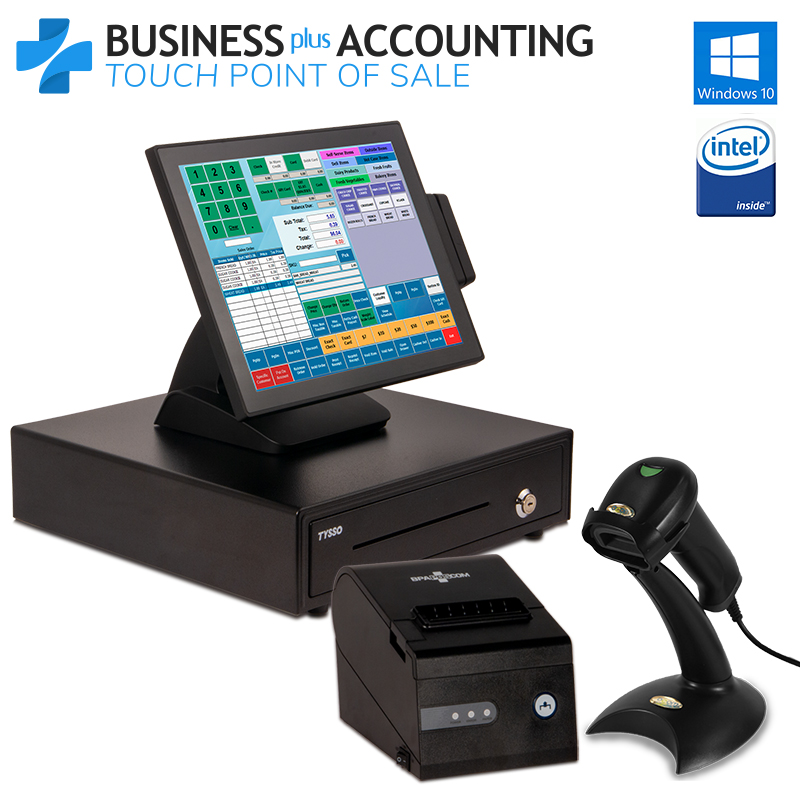Point of Sales System for Small Business: In What Way Point of Sales Systems Improve Retail Efficiency
POS System for Retail Store: Our Retail Deal Platform Simplifies Sales And Stock Management Efficiently
History and Advancement of Point Of Sales Systems
Have you ever stopped to question how the modern-day Point Of Sales System became? It's a journey that twists and turns through decades of development, reflecting not simply technological leaps but likewise the changing rhythm of commerce itself. Imagine a dynamic general shop in the late 19th century-- cash registers clattering, clerks scribbling down sales in ledgers. This was the humble beginning of what would become a sophisticated ecosystem of retail innovation.
The Mechanical Origins

The very first spark fired up in the late 1800s POS Hardware and Software with the innovation of the mechanical money register. This gadget was more than simply a box to hold cash; it was a tool designed to minimize theft and enhance transaction accuracy. Image a shopkeeper pulling a lever, hearing the pleasing "ka-ching" noise, signaling a recorded sale. It's remarkable how this easy mechanical device laid the foundation for the sales tracking abilities we now consider approved.
Electronic Revolution and Digital Dawn
Fast forward to the mid-20th century, and the scene transforms dramatically. Electronic parts started replacing gears and springs. All of a sudden, sales information could be taped digitally, transforming how organizations kept an eye on inventory and client habits. Can you envision the leap from punch cards to touchscreen user interfaces? This transition didn't simply speed things up; it unlocked a new world of information analytics, enabling merchants to prepare for trends and tailor their offerings.
Key Milestones in POS Development
- Mechanical sales register: Late 1800s, foundational tool for deal accuracy.
- Electronic registers: Mid-1900s, presented digital sales recording.
- Barcode scanners: 1970s, automated item recognition, reducing human mistake.
- Integrated software application systems: 1990s, combined sales, inventory, and customer management.
- Cloud-based POS: 2000s onward, allowed remote access, real-time data syncing, and scalability.
The Human Touch in a Digital Age
Some skeptics ask: with all this automation, do we lose the personal connection at checkout? But here's a twist-- modern-day POS systems in fact empower staff to engage more meaningfully with customers by releasing them from laborious manual tasks. I recall a small store where the cashier used a tablet-based POS, effortlessly handling inventory while chatting with consumers about their preferences. The innovation wasn't a barrier; it was a bridge.
| Age | Technology | Impact |
|---|---|---|
| Late 1800s | Mechanical Cash Register | Minimized theft, enhanced sales precision |
| Mid 1900s | Electronic Registers | Digitized sales tape-recording |
| 1970s | Barcode Scanners | Faster checkout, reduced mistakes |
| 1990s | Software application Integration | Unified sales and inventory management |
| 2000s+ | Cloud-Based Systems | Real-time data, scalability, remote gain access to |
Looking back, the advancement of the Point Of Sales System is not just a tale of innovation-- it's a legend of adjusting to the pulse of retail, satisfying challenges, and improving the consumer experience. Next time you view a smooth checkout, keep in mind the winding path that brought us here.

Unloading the Vital Components of a POS System
Every reliable Point Of Sales System depend upon a thoroughly managed ensemble of hardware. Envision a busy coffee shop where orders fly in thick and fast-- the cash drawer snaps shut, the invoice printer hums, and the touchscreen glows with each transaction. This symphony of devices is what keeps the sales register ringing and the company streaming.
Core Hardware Elements
- Touchscreen Screen: The maestro directing the POS experience, permitting quick input and seamless navigation.
- Invoice Printer: The concrete evidence of purchase, important for consumer trust and record-keeping.
- Cash Drawer: The safe and secure vault for physical money, typically neglected but essential for handling cash transactions.
- Barcode Scanner: Accelerates checkout by immediately equating product codes to costs.
- Consumer Display: Enhances openness by showing consumers their billed items and overalls in real-time.
However what about the less glamorous, yet vital components like the POS terminal CPU!.?. !? It's the brain behind the curtain, processing data with precision. Without a robust processor, even the sleekest touchscreen becomes a slow bottleneck.
Specialized Hardware for Retail vs. Hospitality
| Part | Retail Usage | Hospitality Use |
|---|---|---|
| Invoice Printer | High-speed thermal printers for fast checkouts. | Cooking area printers to relay orders straight to cooks. |
| Money Drawer | Durable with several compartments. | Smaller sized, often integrated with mobile POS. |
| Barcode Scanner | Vital for inventory and pricing accuracy. | Less typical; changed by table numbers or order tickets. |
One typical stumbling block? Incorporating all these devices so they interact flawlessly. A lagging printer or an unresponsive touchscreen can spiral into long queues and disappointed customers. The crucial lies in picking hardware with tested interoperability and comprehending the environment where the POS will operate.
Professional Tips for Optimal Hardware Choice
- Prioritize resilience: Hardware sustains consistent use; choose components rated for high deal volumes.
- Examine compatibility: Guarantee peripherals sync easily with your POS software application to avoid glitches.
- Believe ergonomics: For example, a well-placed barcode scanner can speed up checkout significantly.
- Think about future scalability: Modular hardware permits you to add or switch components as your business grows.
- Don't underestimate power supply needs; a reputable UPS can prevent data loss during failures.
Have you ever discovered how a simple cash drawer jam can freeze a whole checkout line? It's these apparently minor missteps that highlight the value of picking hardware constructed for your specific retail or hospitality rhythms. When the elements are in consistency, deals stream like a well-conducted orchestra-- smooth, swift, and pleasing.
Opening the Software Characteristic That Define a POS System
Think of standing at a busy checkout, the line extending behind a client with an armful of products. The last thing you desire is for your POS software to crawl or overestimate a discount rate. That's why comprehending the nitty-gritty of software functionalities can turn turmoil into streamlined performance.
Core Functionalities That Make or Break the Experience
- Stock Management: Real-time tracking isn't just a buzzword. It's the backbone that avoids overselling or stockouts. Advanced POS systems sync inventory instantly, updating across channels quickly.
- Sales Reporting & & Analytics: Numbers inform stories. Do your reports expose hidden patterns like peak purchasing hours or which item packages increase revenue? Deep-dive analytics change raw information into actionable insight.
- Employee Management: Clock-ins, commissions, and access controls-- these features protect your operation and encourage your personnel with precision.
- Client Relationship Management (CRM): Beyond transactions, great POS software application individualizes client experiences, catching preferences to tailor promos that really work.
Expert Tips for Harnessing POS Functionalities
- Integrate with Payment Entrances Smoothly: Not all combinations are developed equivalent. Select systems provide native assistance for numerous payment types, consisting of contactless and mobile wallets, reducing checkout friction.
- Take Advantage Of Cloud Capabilities: Picture accessing your sales dashboard from a beach or a boardroom. Cloud-based POS systems offer versatility and catastrophe resilience that local-only setups absence.
- Personalize User Roles: Granular approval settings prevent unexpected information breaches and empower personnel with the right tools without frustrating them.
- Automate Regimen Tasks: Set reorder points or schedule everyday sales summaries to release up time for tactical choices rather of mundane chores.
Table: Comparing Vital vs. Advanced POS Software Features
| Feature | Vital | Advanced |
|---|---|---|
| Inventory Updates | Manual or regular sync | Real-time multi-location sync |
| Sales Reports | Fundamental everyday summaries | Customizable, predictive analytics |
| Payment Processing | Standard credit/debit | Contactless, mobile wallets, split payments |
| Client Information | Basic purchase history | Behavioral insights and targeted marketing |
Why Some Functions Slip Under the Radar
Most merchants concentrate on the glossy front-end features, but what about the silent warriors-- like information synchronization latency or the speed of the user interface!.?.!? A slow system can frustrate workers and customers alike, spiraling wait times and mistakes. Ever seen a line grow because the POS froze? It's a lesson in why efficiency tuning is just as crucial as feature lists.
Ask yourself: is your POS merely a cash register replacement, or an effective tool designed to optimize your whole sales procedure? The difference lies in how deeply you comprehend and utilize the software application's abilities.
Fortifying Security in POS Transactions
Have you ever questioned what occurs behind the drape when you swipe your card at a Point Of Sales System!.?.!? The unnoticeable dance of encryption and tokenization safeguards your data in manner ins which typically go unnoticed. Yet, not all systems maintain these requirements equally. The maze of securing cardholder data is more than just a checkbox; it's a crucial foundation that can make or break trust in any retail environment.
Consider the subtle nuances that separate a robust POS from a vulnerable one. Information encryption isn't simply about encoding details-- it's about developing a solid fortress around sensitive information during transmission and storage. Without this, hackers can make use of weak spots, turning a basic transaction into a disastrous breach.
Crucial Element to Ensure Compliance and Security
- End-to-end encryption (E2EE): Encrypts information from the moment of swipe or tap till it reaches the payment processor, rendering intercepted info ineffective.
- Tokenization: Changes delicate card details with unique tokens, avoiding exposure of actual information during processing.
- PCI DSS adherence: The Payment Card Industry Data Security Requirement isn't just a guideline however a blueprint for safeguarding payment communities.
- Routine security audits: Regular checks identify vulnerabilities before harmful actors do.
- Firmware stability: Making sure that POS gadgets run just authorized software application to avoid tampering or malware injection.
Typical Oversights That Undermine POS Security
Many overlook the risk positioned by outdated software application versions. Think of a classic tale where a hacker exploits a recognized vulnerability covered months back-- it resembles leaving the front door large open while boasting about your security system. Weak credential management often leads to unauthorized gain access to; using default passwords or overlooking multi-factor authentication can turn a fortress into a screen.
Specialist Tips for Enhancing Deal Safety
- Execute multi-layered authentication to restrict access to POS management consoles.
- Ensure real-time tracking and alert systems remain in place to capture any anomalous activity promptly.
- Train personnel carefully on finding phishing efforts and social engineering tactics that target POS vulnerabilities.
- Embrace network division so that POS terminals run on separated networks, limiting contagion from other compromised gadgets.
| Security Function | Function | Professional Insight |
|---|---|---|
| End-to-End File encryption | Safeguards data during all deal phases | Typically undervalued but important for preventing man-in-the-middle attacks |
| Tokenization | Changes sensitive info with tokens | Lowers scope of PCI DSS compliance by restricting direct exposure |
| Firmware Validation | Prevents unapproved code execution | Regular updates and checks are non-negotiable for POS stability |
Eventually, security and compliance in POS transactions are not static states however dynamic procedures. They demand alert adjustment and a proactive state of mind. Have you examined whether your system's defenses adjust as swiftly as the dangers evolve? Neglecting this can turn a single deal into an entrance for breaches that ripple throughout a whole operation.